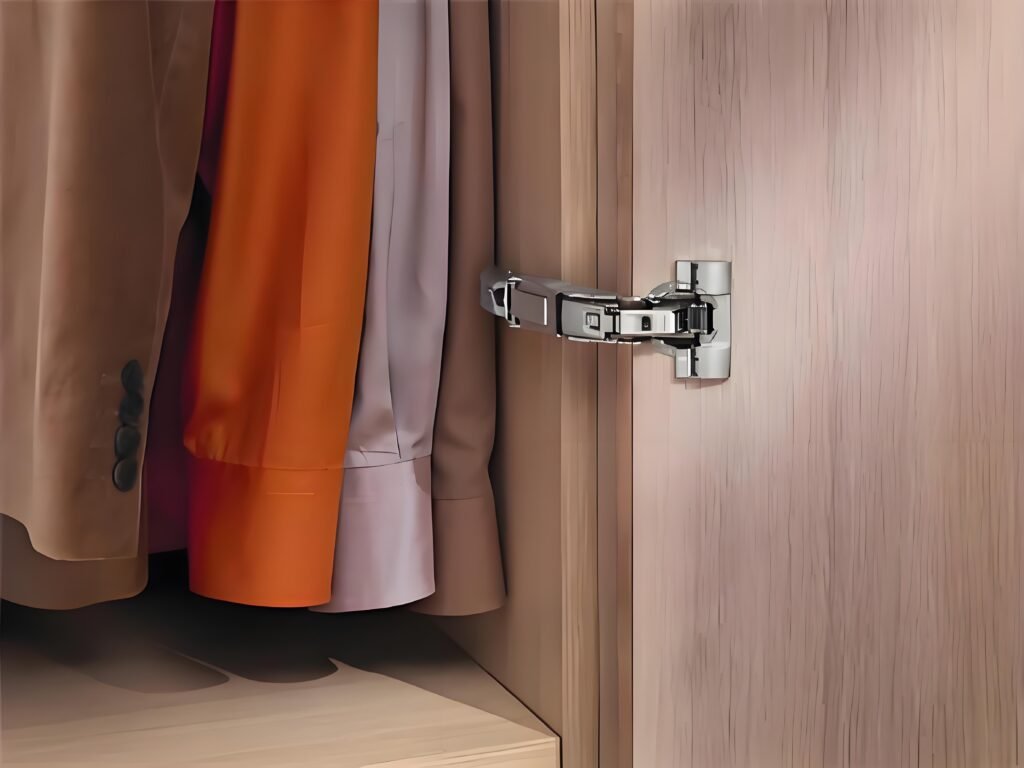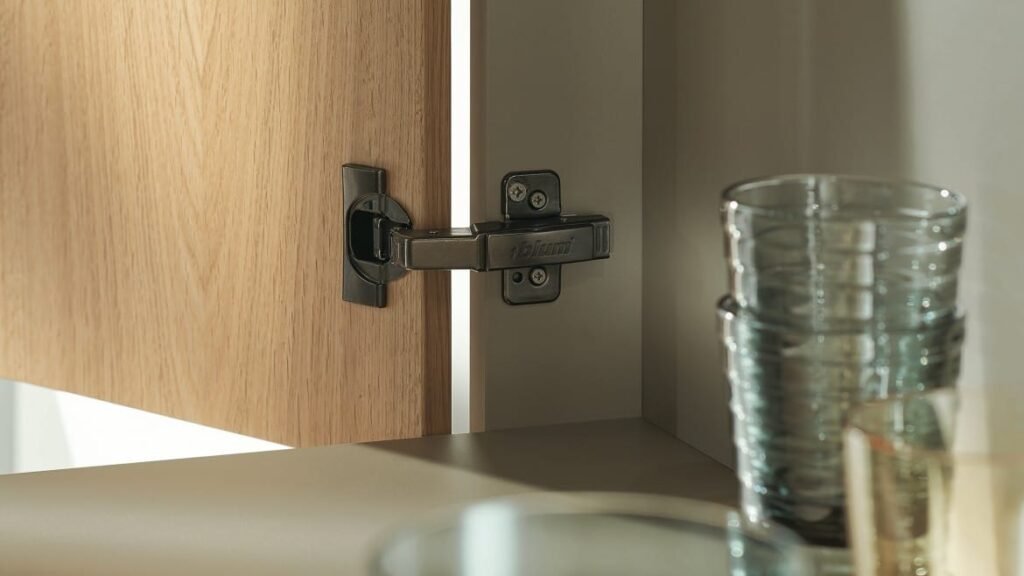
ø35 Soft Close Concealed Door Hinges - KG207
Inset(C=17)
Main Material: Cold-rolled steel/Q235
Finish: Nickel Plated/Gunmetal
Opening hinge: 100°
Dia. of hinge cup: 35mm
Depth of hinge cup: 11.3mm
Product thickness: 1.0mm
Door (K) dimension: 3-7mm
Door thickness: 14-25mm
Optional color, stealth, cap.
Application Segment
Cabinet Doors, Wardrobe Doors


Our Services

MOQ Offered
We provide flexible minimum order quantities, allowing you to start small and scale up as needed.

Large Inventory
Ensuring Ample Stock for Immediate Shipment, Eliminating Wait Times for Production.

Complete Specifications
We refine various specifications of hinges according to different usage scenarios.
AOLISHENG manufactures concealed door hinges that meet standards, offering customized services and solutions to help your business succeed.
Why Choose AOLISHENG
Rich Experience
With years of concealed door hinges production experience, we have a team of professionals specializing in hinge design, manufacturing, and management.
Leading Production Capacity
We possess CNC machining for heavy-duty applications, wire-cutting machines, automated balancing, pressing equipment, and electroplating production lines for hinge manufacturing.
Quality Assurance
All hinges undergo over 48 hours of salt spray testing and are subjected to more than 80,000 cycles of open-close testing with appropriate door weights, meeting the quality standards of QB/T2189-1995.
Mass Production Capability
With over 10,000 square meters of production facilities and thousands of square meters dedicated to electroplating workshops, we ensure a large-scale supply of hinges.
We Look Forward To Your Contact
AOLISHENG is your trusted global partner for high-quality drawer slide and hinges production, with strategic factories worldwide and professional local service teams. Partnering with AOLISHENG ensures efficient project delivery, robust supply chains, expert technical support, and a thriving customer base.
FAQ
What hinges do you use for a hidden door?
Of course! For invisible doors (also called hidden doors), the following types of hinges are commonly used:
1. Invisible hinges (also called “concealed door hinges”):
Features: When the door is closed, the concealed door hinges are completely hidden in the door frame, and no part of the concealed door hinges can be seen. They are usually designed very delicately so that the door is almost integrated with the wall when closed.
Application: Suitable for invisible doors that need to keep the door flush with the wall.
2. Seamless hinges (also called “seamless invisible hinges”):
Features: This type of hinge has no obvious gap on the side of the door, and there is almost no protrusion between the door body and the wall. They are usually made of high-grade alloy materials to ensure the stability and durability of the door.
Application: Suitable for high-end decoration, which can provide a completely flat appearance.
3. Bearing hinges (also called “hidden bearing hinges”):
Features: The design of this hinge makes the door turn very smoothly, and the bearing part of the hinge is completely hidden in the door frame. They usually have good load-bearing capacity and are suitable for heavier doors.
Application: Suitable for heavy invisible doors or occasions where extra stability is required.
4. European hinges (also called “European invisible hinges”):
Features: This type of hinge has a complex design, but provides good concealment and durability. They usually have an adjustment function that can adjust the opening and closing gap of the door.
Application: Suitable for invisible doors that require height adjustment functions and elegant appearance.
When installing invisible doors, you also need to consider the weight of the door, the frequency of use, and the structure of the wall. If you are not sure which hinge is best for your needs, it is recommended to consult a professional door and window supplier or installer who can recommend the best hinge type based on actual conditions.
Are concealed door hinges worth it?
Whether concealed door hinges are worth using depends on your specific needs and budget. Here are some considerations to help you decide whether to invest in concealed door hinges:
Advantages
1. Beautiful and neat: concealed door hinges can perfectly align the door and the wall, and there is almost no gap when closed, making the overall visual effect more concise and modern.
2. Increase privacy: The design of concealed door hinges allows the door to be completely hidden in the wall, which is a good choice for designs that need to be confidential or hide certain rooms.
3. Save space: Concealed door hinges are suitable for occasions where space usage needs to be optimized because the door does not take up additional space when opened and closed.
4. High-end temperament: Using concealed door hinges can usually enhance the grade and taste of decoration, making the overall design appear more upscale and professional.
Disadvantages
1. Higher price: Concealed door hinges are usually more expensive than traditional hinges, especially high-quality concealed door hinges may require additional fees.
2. Complex installation: Installing concealed door hinges requires professional skills and experience, and may require additional installation fees and time.
3. Difficulty in maintenance and repair: The internal structure of concealed door hinges is complex, and if problems occur, repairs may be difficult and expensive.
4. Weight limit: Not all concealed door hinges can withstand heavy doors, so you need to consider the weight of the door and the bearing capacity of the hinge when choosing.
Summary
If you pursue perfect visual effects and high-end decoration style and have a sufficient budget, then concealed door hinges are undoubtedly worth investing in. They can significantly improve the beauty and functionality of the space. However, if you have a limited budget or pay more attention to practicality and easy maintenance, traditional door hinges may be a more practical choice.
What is the difference between a secret door and a concealed door?
There are some key differences between Secret Door and Concealed Door in terms of design and function:
1. Design Purpose
Secret Door:
Purpose: Used to conceal certain spaces or passages, often used to provide hidden entrances or exits, such as secret rooms, vaults, or shelters. Designs may include disguises such as bookshelves, walls, or other furniture.
Features: Emphasis on hidden functions, there may be complex mechanisms or triggers to open the door. The purpose is to conceal the existence of the door and make it difficult to be found in ordinary environments.
Concealed Door:
Purpose: Used to provide a seamless visual effect so that the door is flush with the wall when closed, usually used in modern and high-end decorations, pursuing a simple and neat appearance.
Features: The hinges and door frame are partially hidden inside the door, and the door opening and closing mechanism is concealed, but the existence of the door itself is obvious, but the design does not show traditional hinges or door gaps.
2. Appearance and Design
Secret Door:
Appearance: This can be disguised as a wall, bookshelf, mirror, etc. The door itself is designed to be consistent with the surrounding environment to conceal its true function.
Design: Often contains hidden switches, combination locks, or other triggers to open the secret door, usually requiring special operation steps.
Invisible Door:
Appearance: The door is almost flush with the wall when closed, with no visible hinges or gaps. The appearance design is simple and aims to achieve a modern and seamless effect.
Design: The use of invisible hinges and concealed door frame design makes the door’s opening and closing mechanism inconspicuous, but the existence of the door is obvious.
3. Function
Secret Door:
Function: Provides a hidden entrance or exit for privacy protection or hiding important areas.
Security: Often used in occasions that require a high degree of concealment and confidentiality, and can hide important areas or escape routes.
Invisible Door:
Function: Provides a modern and neat appearance, allowing the door to seamlessly connect with the wall and maintain the visual continuity of the space.
Security: Focuses mainly on aesthetics and functionality, and usually does not involve special security features or hidden mechanisms.
4. Installation and maintenance
Secret doors:
Installation: Usually requires complex installation and custom design, including hidden devices and trigger mechanisms, and may require professional installation.
Maintenance: Maintenance and repair may be difficult due to the complex hidden mechanism.
Invisible doors:
Installation: Although the design is also more complex, it mainly focuses on the installation of invisible hinges and door frames, requiring precise alignment.
Maintenance: The maintenance of invisible hinges usually involves adjusting the door frame and hinges, but the overall maintenance of the door is relatively simple.
Summary
Secret doors are mainly used for concealment and protection, and the design emphasizes hidden and secret functions. Invisible doors are mainly used for aesthetics and modern decoration, and the design focuses on seamless visual effects.
Which door to choose depends on your needs: if you need hidden functions, secret doors are more suitable; if you pursue a modern and simple decoration effect, invisible doors are a better choice.
What are the disadvantages of a concealed door closer?
Disadvantages of invisible door closers include:
1. Complex installation: Invisible door closers require precise installation and adjustment, which usually requires professionals to complete, and the installation process may be cumbersome.
2. Difficult maintenance: Because the door closer is hidden inside the door frame, maintenance and repair may require the removal of the door frame or door panel, which is more complicated.
3. Higher cost: Invisible door closers are generally more expensive than traditional exposed door closers, especially high-quality products.
4. Weight limit: Some invisible door closers have certain restrictions on the weight and thickness of the door, and may not be suitable for particularly heavy or thick doors.
5. Difficulty in adjustment: It may be difficult to adjust the force and speed of the door closer because its components are hidden inside the door and are not easy to adjust and check.
These disadvantages may affect the choice of invisible door closers, especially if the budget is limited or frequent maintenance is required.
